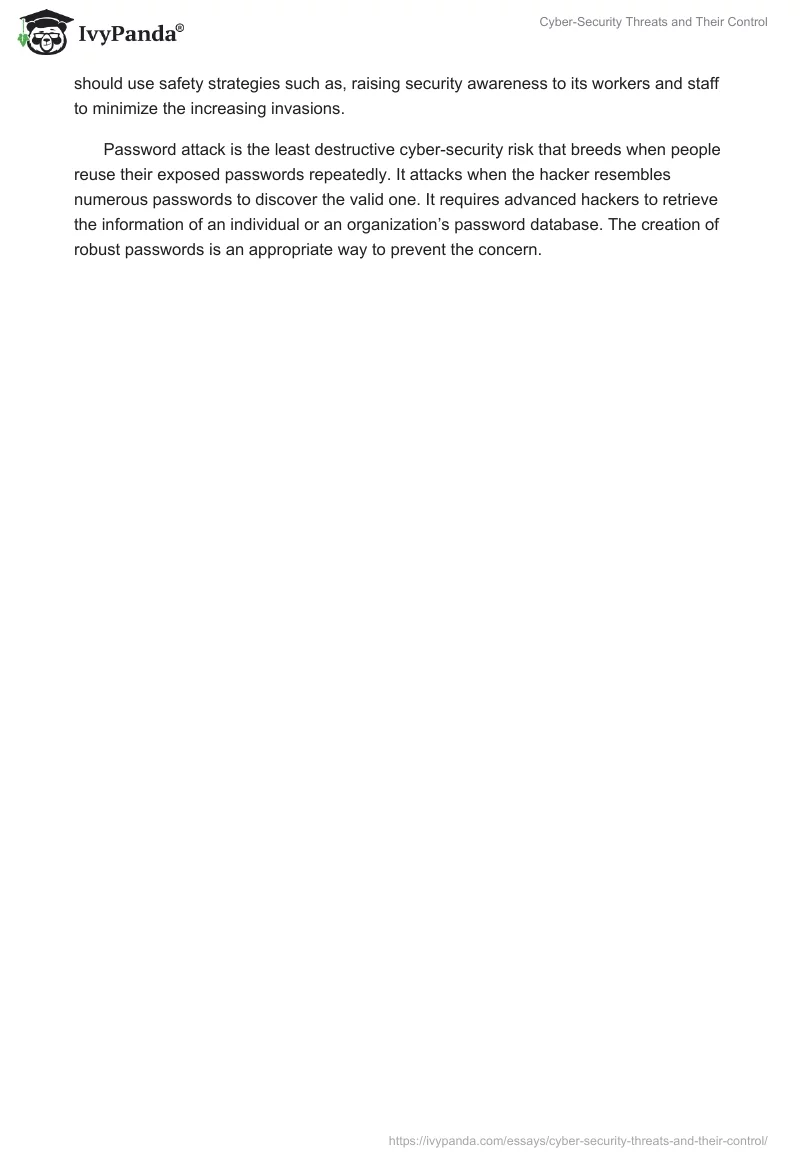Cyber-security menaces are the risks of encountering a cyber-attack, a hostile attempt by an institution or a person to interfere with a person or institution’s system. Advanced Persistent Threats (APT) is the most harmful class of cyber-security threats that propagates when hackers extract essential data from a prohibited network without being discovered for a prolonged period. It attacks when cybercriminals install malware on the organization’s system to help them protect their tracks. The act’s success needs experienced hackers and a spy to gather information from the plotted corporation. By employing threat intelligence techniques in a firm, the security team can identify and manage the objection.
Distributed Denial of Service (DDoS) is the second threat that increases when the perpetrators attempt to jeopardize online systems by overwhelming them with data. The attack occurs when multiple devices are functioning jointly to strike one target. Skilled individuals and the power of botnets consisting of settled computers can aid in a successful offense. By establishing high levels of network security such as, Artificial Intelligence (AI) or antivirus and anti-malware software can be used to prevent suspicious behavior.
Man-in-the-Middle is the third cybercrime committed by assailants through the customers’ servers to retrieve data without their knowledge. The crime propagates when the perpetrators intercept an existing conversation between a user and a system and operate as the legitimate participants. The MitM can be successful when the cybercriminals reach their final stage successfully to satisfy their desires. Avoiding public and insecure internet connections, which ushers the spreading of documents of the altered code to customers’ can assist in exterminating the threat.
Social engineering is the fourth cyber-security threat that relies on verified connection between the assailants and targets, which proposes an influence to submit their sensitive information. The crisis continues to propagate because the victims remain to accept the attackers’ quick decisions. The offense becomes victorious when the attackers deceive the corporation employees’ to deliver the credentials. Firms should use safety strategies such as, raising security awareness to its workers and staff to minimize the increasing invasions.
Password attack is the least destructive cyber-security risk that breeds when people reuse their exposed passwords repeatedly. It attacks when the hacker resembles numerous passwords to discover the valid one. It requires advanced hackers to retrieve the information of an individual or an organization’s password database. The creation of robust passwords is an appropriate way to prevent the concern.


